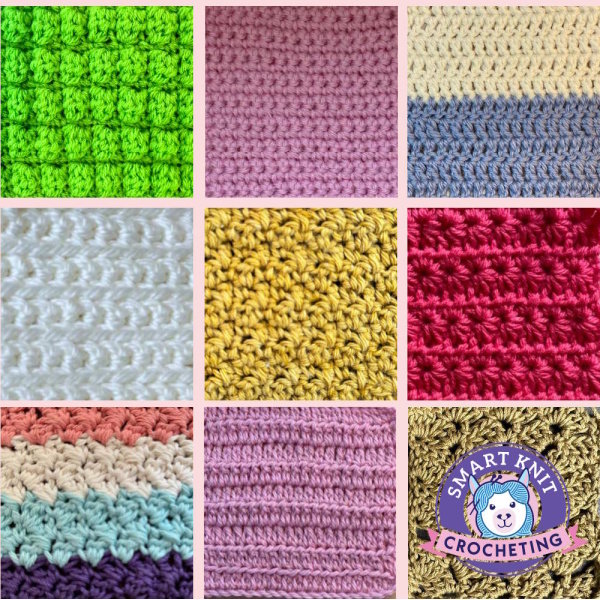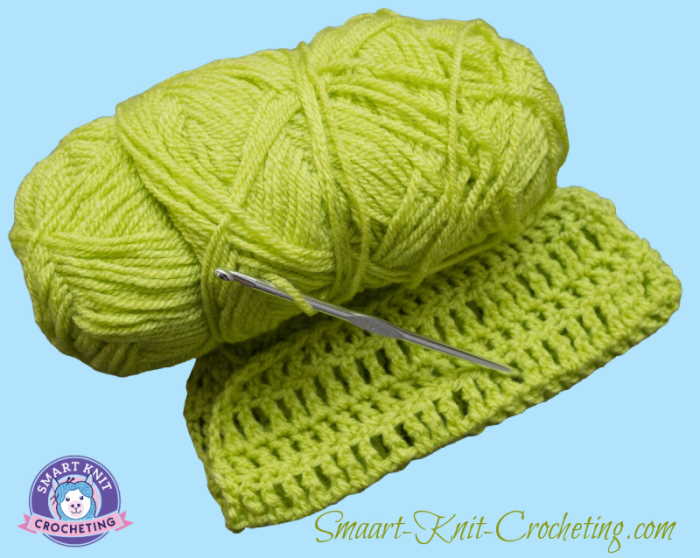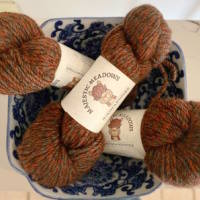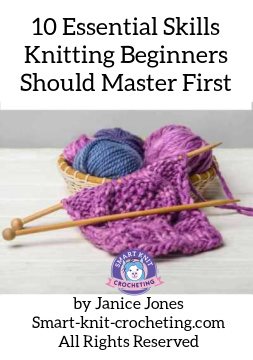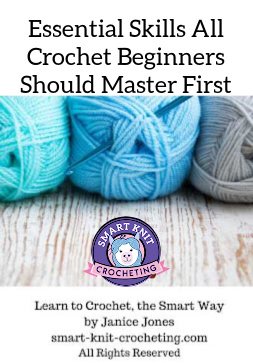- Home
- How to Knit: Basics
- Magic Loop Knitting
Magic Loop Knitting: A Step-by-Step Tutorial for Beginners
By Janice Jones, Certified Knitting Instructor (CYC), Last Updated November 2025
Magic loop knitting is a fantastic technique that lets you knit small-circumference projects—like socks, sleeves, and hats—using a long circular needle instead of double-pointed needles (DPNs).
Magic loop is one of the few methods for working in the round on small circumference projects. Double-pointed needles, also known as DPNs, have been around for a long time and serve the same purpose. There are also small circular needles, approximately 9 inches long, that can be used. These little needles are super cute, but it takes a bit of getting used to. Some knitters prefer to use two sets of circular needles to complete the task.
If you're new to this method, don’t worry! Follow these step-by-step instructions, and you’ll master it in no time.
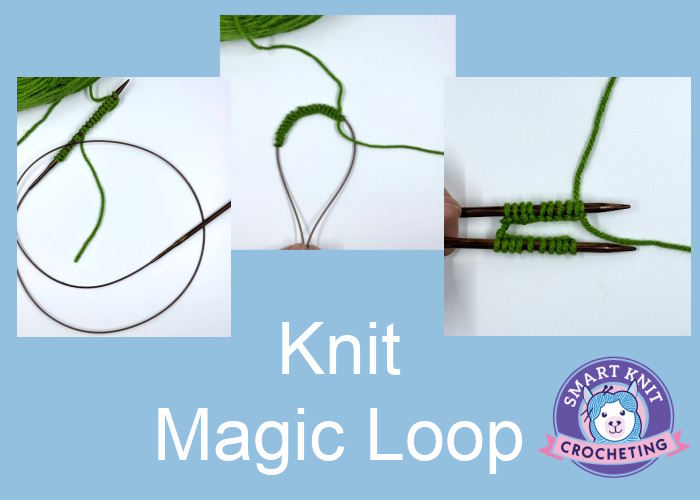
Sarah Hauschka is credited with devising the magic loop method in 2002. It was first published in a booklet by Bev Galeskas, "The Magic Loop." If you are interested, you can purchase it through A Likely Yarn.
Why Use the Magic Loop Technique?
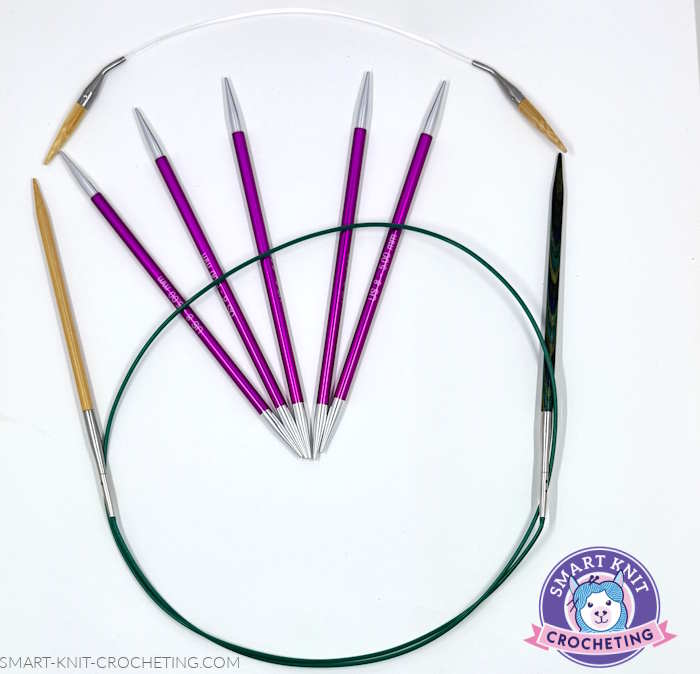
The knit magic loop technique is just one of several ways to knit in the round. When the circumference of the project is large enough, using circular knitting needles is the best method. But what if you want to work a small circumference project such as a pair of socks, a pair of mittens or gloves, or a small hat. What are your options?
- A tiny circular needle
- A set of double pointed needles (DPN)
- Two large circular needles or
- The Magic Loop Technique worked on one circular needle
Materials Needed for the Magic Loop Method:
- A circular needle (at least 32 inches/80 cm long, preferably 40 inches/100 cm). The cable should be flexible and should not retain memory, meaning it should be able to lie where you want it without trying to revert to its original shape. Most circular needles do have flexible cables, except for the cheapest ones.
- Yarn (choose smooth, medium-weight yarn for easier handling)
- Scissors
- Tapestry needle (for weaving in ends)
- Stitch marker (optional, but helpful for marking rounds)
Magic Loop Knitting: Choosing Needles
If you don't own any circular needles that are 32 or 40 inches, consider purchasing a set of interchangeable circular needles. Some of my favorite needles that have nice, flexible cables include:
Kollage Square Circular 32 Inch
Addi Circular Turbo Rocket Lace
Step-by-Step Instructions
Step 1: Cast On Stitches
- Use your preferred cast-on method (long-tail cast-on is a good choice).
- Cast on the required number of stitches for your project onto the circular needle or to practice, cast on 24 stitches.
 Cast On as Many Stitches as You Need
Cast On as Many Stitches as You Need- Slide all of the stitches you just cast onto the cable.
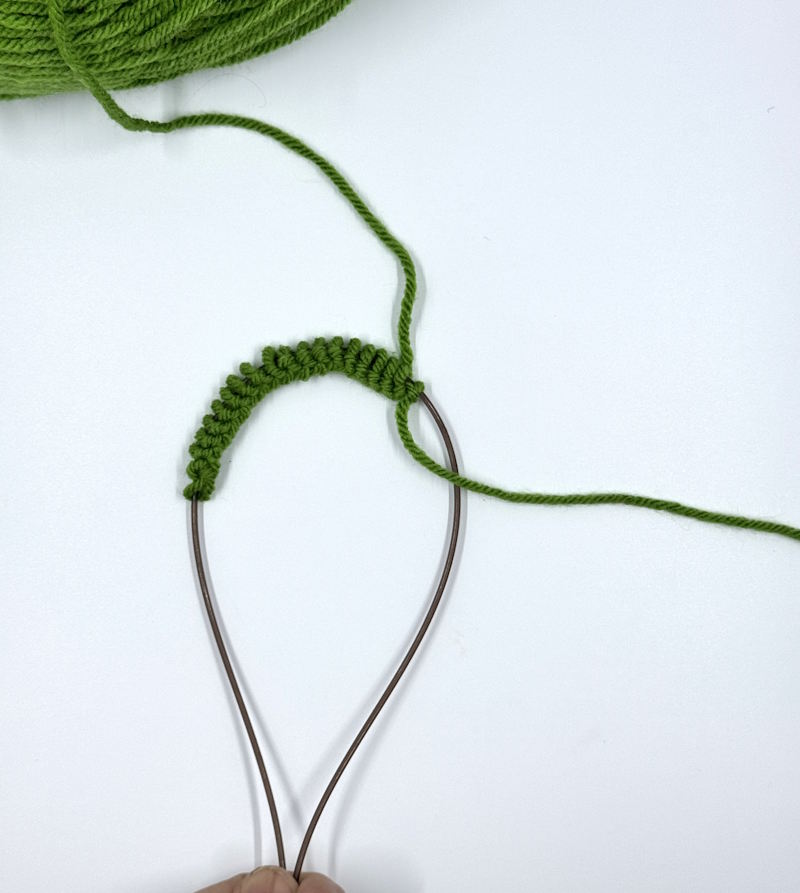 Slide All the Stitches onto the Cable
Slide All the Stitches onto the CableStep 2: Prepare for Magic Loop
- Find the halfway point of your stitches and pinch the cable at that spot.
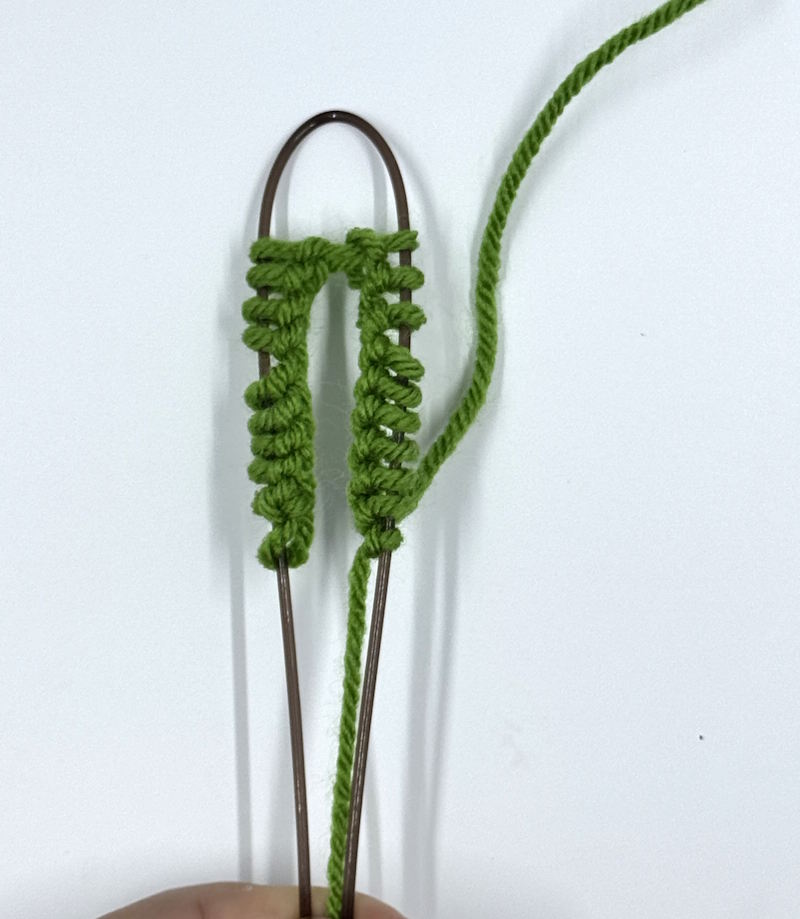 Divide the Stitches Approximately in Half
Divide the Stitches Approximately in Half- Gently pull out the cable, creating a loop in the middle. Your stitches should now be split into two equal sections. Place each set of stitches on its needle tip.
Step 3: Position Your Needles
- Turn the needles around so that the points are facing to the right. With the needles parallel, each needle should have one-half of the stitches.
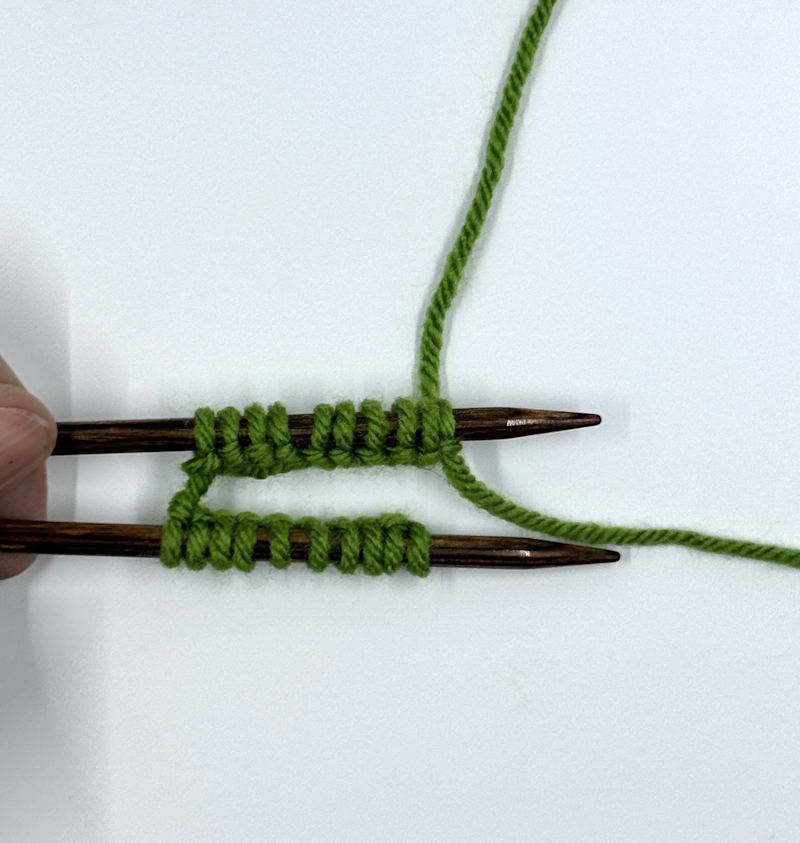 Move the Stitches to the Two Needle Tips With the Working Yarn Coming From the Needle Farthest From You.
Move the Stitches to the Two Needle Tips With the Working Yarn Coming From the Needle Farthest From You.- Look at the stitches and arrange them so they are not twisted. Check to make sure the working yarn is on the back needle.
Step 4: Begin Knitting the First Half of Stitches
- Pull the back needle (or the one farthest from you) out so the stitches rest on the cable.
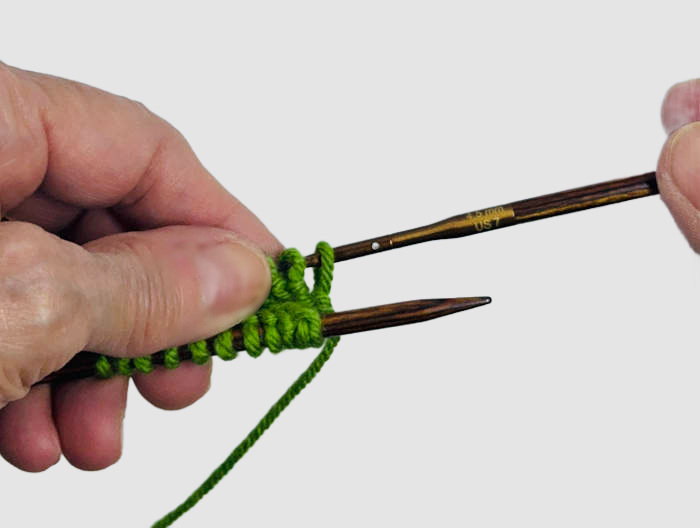
- Place the working yarn over the stitches you will be working so it doesn’t get caught in the middle of the work.
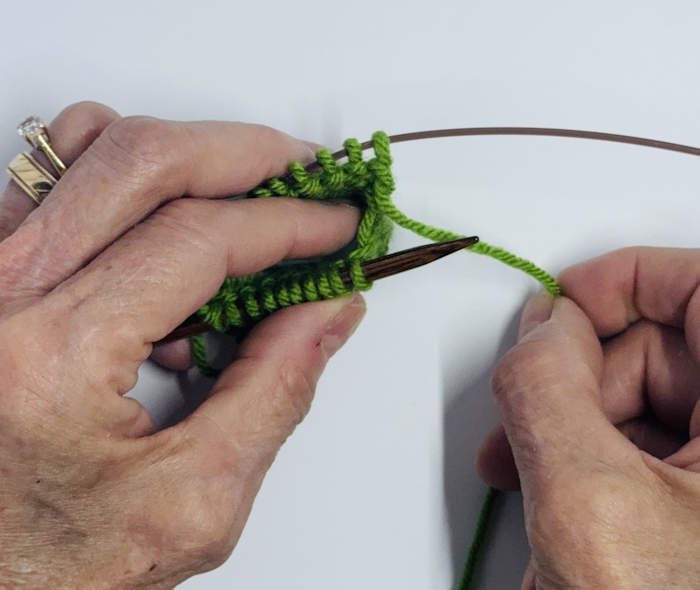
- Closely hold the bare cable and the front needle together. (if you just let the cable hang down, you will get a big gap in your work. (called ladders)
- Use the free back needle to knit across the stitches on the front needle.
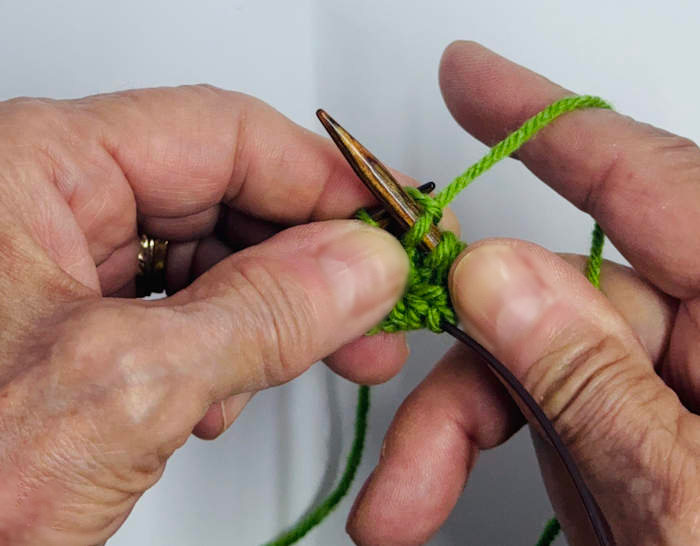
- When you finish knitting the stitches on the front needle, you will have an empty front needle.
Step 5: Rotate and Knit the Second Half
- You will always be working the stitches from the front needle with the empty needle that was initially in the back.
- When you finish knitting those stitches, rotate your needles so that both points are facing to the right. The stitches in front will still be resting on the cable.
- Push the front needle tip towards the stitches and off the cable. Once the right needle has the stitches in place, pull out the cable from the back needle and start knitting. Always keep the working yarn between the two needles
Step 6: Repeat for Each Round
- Continue knitting this way, adjusting the loop and rotating the work as needed.
- The loop in the cable will always remain at the same spot (between the two halves of stitches).
- Keep an even tension, especially when switching between halves, to avoid loose stitches at the joins.
- When transitioning between sections, ensure that your stitches aren't twisted on the needle.
- If your stitches seem to be twisted or positioned differently, gently adjust them before knitting.
Step 7: Finish Your Project
- If working in the round, follow your pattern instructions to complete the project.
- Bind off when finished and weave in any loose ends with a tapestry needle.
Pro Tips
- Use a flexible cable: A long, soft cable makes magic loop knitting easier.
- Avoid ladders: Tensioning your yarn for working the first couple of stitches requires some practice. If you pull too tightly when working the first stitch, it won't be easy to slide that stitch back onto your needle. If you work it too loosely, the stitches will be uneven.
- Always start your round with the yarn in front of the stitches on the back needle/cable, but behind your front needle, just as you would typically do.
- Practice with a larger project: A hat or mitten might be a good first project for this technique. Socks are more challenging, so I would recommend something easier to start with. You may even decide to make a wrist warmer.
- Keep track of your rounds: Use a stitch marker to mark the beginning of each round, or use the yarn tail to indicate where the round ends.
Working with Small Circumferences
- Magic Loop is great for knitting socks, sleeves, mittens, and other small projects.
- However, if you're working with very few stitches (like for fingers on gloves), you might find it tricky. Consider using two circular needles or double-pointed needles (DPNs) for those tiny areas.
Common Beginner Mistakes in Magic Loop Knitting
| Mistake | Solution |
|---|---|
| Ladders (loose stitches at the join) | Pull the first stitch of each section snug. Shift stitches slightly to prevent permanent looseness. |
| Tangled or twisted stitches | Always check your stitches after casting on to ensure they aren't twisted. |
| Cable gets stiff or hard to maneuver | Try soaking your circular needle cable in hot water for a few minutes to soften it. |
| Forgetting to slide stitches back onto the needles | Always remember to pull the needle through so that the stitches move from the cable back onto the needle tips before knitting. |
Frequently Asked Questions
What is the Benefit of Magic Loop?
What is the Benefit of Magic Loop?
For those who do not like dpn’s the Magic Loop method allows you to work on projects with small circumstances such as mittens and socks. It’s also good for travel because you don’t need to worry about loosing a dpn, especially on plane travel.
Is Magic Loop hard to do?
Is Magic Loop hard to do?
Like many new knitting techniques, it takes a bit of getting used to. Until you develop that muscle memory to use it comfortably, it’s best to concentrate on each step of the process. Practice makes perfect, so don’t give up.
What size knitting needles work best with Magic Loop?
What size knitting needles work best with Magic Loop?
You can use any size knitting needles, but you will want to use a 32 to 48 inch cable to make it easier to make. Pick a set of circular needles that have a flexible cable cord, that is one that will bend easily.
Are there times when you shouldn't use the magic loop?
Are there times when you shouldn't use the magic loop?
- If your project has a very large circumference (like a sweater body), you don’t need Magic Loop. Just use a circular needle of appropriate length.
- If you prefer less cable management, short circular needles (9-12 inches) may be better for small projects like socks, or you can just use double-pointed needles (DPN).
Final Thoughts
Magic Loop is an amazing technique that gives you flexibility and control over circular knitting. It might feel awkward at first, but with practice, it becomes second nature.
Stick with it, and soon, you'll be knitting small-circumference projects without ever needing DPNs again!

